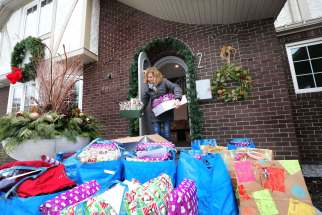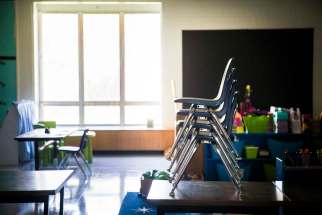Learning to help North End students
Read this article for free:
or
Already have an account? Log in here »
To continue reading, please subscribe:
Monthly Digital Subscription
$0 for the first 4 weeks*
- Enjoy unlimited reading on winnipegfreepress.com
- Read the E-Edition, our digital replica newspaper
- Access News Break, our award-winning app
- Play interactive puzzles
*No charge for 4 weeks then price increases to the regular rate of $19.00 plus GST every four weeks. Offer available to new and qualified returning subscribers only. Cancel any time.
Monthly Digital Subscription
$4.75/week*
- Enjoy unlimited reading on winnipegfreepress.com
- Read the E-Edition, our digital replica newspaper
- Access News Break, our award-winning app
- Play interactive puzzles
*Billed as $19 plus GST every four weeks. Cancel any time.
To continue reading, please subscribe:
Add Free Press access to your Brandon Sun subscription for only an additional
$1 for the first 4 weeks*
*Your next subscription payment will increase by $1.00 and you will be charged $16.99 plus GST for four weeks. After four weeks, your payment will increase to $23.99 plus GST every four weeks.
Read unlimited articles for free today:
or
Already have an account? Log in here »
Hey there, time traveller!
This article was published 02/12/2020 (1837 days ago), so information in it may no longer be current.
Pandemics have a way of exposing cracks that have always existed in the foundations of our institutions.
The fault lines in Manitoba’s education system are not new; students disappear through them every year. Over the last decade, an average of 400 North End students in grades 7 to 12 have been reported “inactive” during the school year.
“We know the COVID-19 pandemic has created even more stress on North End students and that more students are disengaging from school, so this is a challenge that’s just going to get further exacerbated,” Tom Simms, co-director of the Community Education Development Association (CEDA), told the Free Press at the end of November.
A plan to find, help MIA students

Posted:
An average 400 Grade 7-12 students in the North End have been reported “inactive” during the school year for the last decade.
And so, in a collaboration that’s as timely as it is important, CEDA is partnering with Ndinawemaaganag Endaawaad Inc. and Ma Mawi Wi Chi Itata Centre to create the Indigenous Education Caring Society, a non-profit charitable organization that will offer students a culturally sensitive alternative to standard middle and high schools in the Winnipeg School Division. The partners are looking to establish two learning sites in the North End, and the IECS programs are expected to launch in the 2021-22 academic year. A $500,000 capital grant from the Winnipeg Foundation, as well as support from the Thomas Sill Foundation, will get the ball rolling.
Keeping kids active and engaged in school is a worthwhile goal in non-pandemic times, but its importance has been underscored by the realities facing educators, families and students in the era of COVID-19. In the spring, when the early days of the pandemic thrust families into the bootcamp of virtual learning, inequalities asserted themselves immediately.
Not everyone had access to the technology necessary to make virtual learning possible; not every family has extra laptops and tablets kicking around, and not every family has reliable Wi-Fi access. Even that oft-evoked pandemic image of a dining-room-table-turned-classroom wasn’t possible for many people; not everyone has extra space to facilitate quiet, focused learning. Not everyone has extra space, period. Many kids rely on after-school programs — and breakfast and lunch programs — that were suddenly absent this year.

And those are just the logistical challenges. Not every child learns the same way, and most people are Zoomed out enough themselves to know that trying to engage via a screen is more work than doing the same in person.
So, to Mr. Simms’ point, if a student was already disengaged with and not able to find footing in a traditional education system, it’s not hard to see how the challenges inherent in a pandemic would make a serious — and longtime — problem much worse.
“Kids are resilient.” That phrase has been bandied about a lot, especially over the past few months, mostly to allay adults’ concerns about how children would cope with all the seismic disruptions this year has brought to their lives. Yes, a lot of kids are resilient. But a lot of them are not. And not all children are dealing with the same challenges and barriers.
Programs that meet kids where they’re at, such as the Indigenous Education Caring Society and the 13 other off-campus programs the WSD has, are more critical now than ever. If we want our children — all of our children — to stay active in school, we can’t leave any of them behind.







